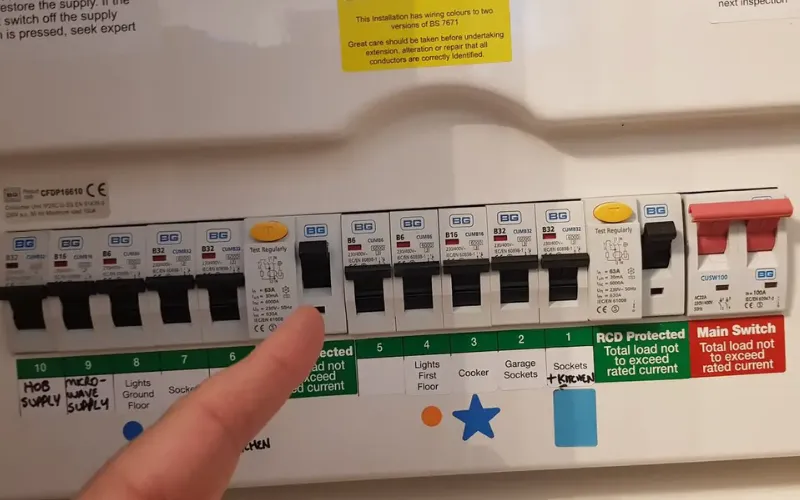Understanding RCD Tripping
Residual Current Devices disconnect power when they detect small leakage currents to earth. Repeated trips point to faults in fixed wiring or appliances and must be investigated promptly.
Professional Fault-Finding Workflow
- Visual & isolation: Identify obvious damage, isolate affected circuits.
- Dead tests: Insulation resistance & continuity to locate breakdowns.
- Live tests: Earth fault loop (Zs), RCD trip times, polarity verification.
- Root cause fix: Repair/replace damaged accessories, cables, or devices.
- Certification: Minor Works/Installation Certificate; update EICR status.
EICR Coding Explained
- C1 – Danger Present: Make safe immediately (e.g., exposed live parts).
- C2 – Potentially Dangerous: Urgent remedial action required.
- FI – Further Investigation: Suspected issue needs targeted testing.
- C3 – Improvement Recommended: Not unsafe, but below current standards.
Any C1, C2, or FI yields an Unsatisfactory outcome until rectified and verified.
Common 2025 Remedials
- Upgrade to RCBO consumer units (circuit-by-circuit protection).
- Add/verify bonding to gas and water services.
- Replace damaged accessories; correct polarity or loose terminations.
- Install surge protection and address external circuit IP ratings.
Documentation & Compliance
Provide updated certificates, photos where needed, and a clear remedial report referencing original EICR observations and resolution dates for audit trails.
FAQs – EICR & Fault Finding
How quickly must C1/C2 items be fixed?
C1 hazards are made safe immediately; C2/FI typically within 28 days or sooner if specified.
Will RCBOs stop nuisance tripping?
They isolate faults to individual circuits, reducing whole-property outages.
Do I need a full EICR after remedials?
Not always — targeted certification can close items; a re-test may be advised by the inspector.
Book a Professional EICR & Remedials
Get clear diagnostics, compliant paperwork, and fast remedial turnaround from EICR specialists in 2025.

